This essay was originally published in The Public Domain Review under a Creative Commons License. Please see their rules for reuse.
The second essay in a two-part series in which Lily Ford explores how balloon flight transformed our ideas of landscape. Here she looks at the phenomenon of the panorama, and how its attempts at creating the immersive view were inextricably linked to the new visual experience opened up by the advent of ballooning.
Until the late eighteenth century, the predominant mode of landscape representation was the bird’s-eye view. This type of image offered the onlooker a high viewpoint outside the subject depicted within the frame of representation, whether a city, a coastline, or a pastoral scene. The aim to show as much as possible outweighed the concern for true perspective and straight sight lines. Robert Harbison captured the dynamic of the bird’s-eye view when he commented, of Wenceslaus Hollar’s 1648 “Long View” of London, “This is not exactly London as anyone experiences it, but London laid out neatly in the mind’s eye, where one can enumerate its features and remind oneself of many separate things at once”.1

[Picture above scrolls from left to right]. Long View of London from Bankside, a panoramic etching made by Wenceslaus Hollar in Antwerp, 1647. The image is six plates that join together, each consisting of drawings made from a single viewpoint, the tower of St Saviour in Southwark (now Southwark Cathedral) — Source
The panorama — patented by the Scottish portraitist Robert Barker in 1787 — was a new method of displaying a landscape image. Barker’s proposal was to exhibit a painted landscape in a 360-degree view on a circular canvas strip surrounding the viewer. This was not really a new kind of image: the manipulation of perspective, with multiple viewpoints made to appear visually consistent, was already a constituent feature of bird’s-eye views. Barker’s innovation was rather in the viewer’s interface with the image. The panorama was an apparatus that would isolate and control what it was possible to see. His specifications included lighting from above, an isolated central viewing platform exactly halfway up the height of the canvas, restrictions on the viewer getting too close to the picture, entrance from below, and ventilation without windows. The edges of the image were covered by a canopy that, at the top, also hid the source of light. Barker wasn’t taking the picture out of the frame, he was making the frame big enough to include the spectator as well.
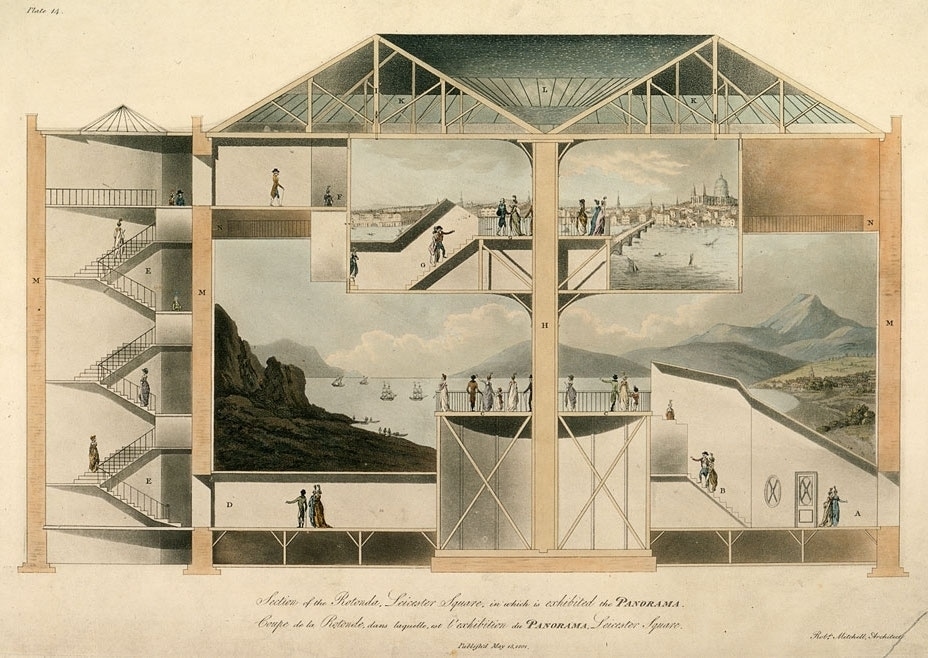
To audiences anticipating a conventional bird’s-eye view, it must have been strangely thrilling to walk through a tunnel and up onto a viewing platform and find themselves entirely surrounded by an illuminated scene. Initial responses to Barker’s inaugural panorama in 1792, a view of Edinburgh from Calton Hill, compared it to recent feats of illusion and visual trickery, such as Philippe de Loutherbourg’s Eidophusikon.2 But Barker was emphatic in his wording when defending the show against these comparisons:
There is no deception of glasses, or any other whatever; the view only being a fair sketch, displaying at once a circle of a very extraordinary extent, the same as if on the spot; forming perhaps, one of the most picturesque views in Europe. The idea is entirely new, and the effect produced by fair perspective, a proper point of view, and unlimiting the bounds of the Art of Painting.3
Barker’s insistence on the “fair” (twice), “proper” and artistic character of his panorama painting was a counterweight to the startling sense of hyperreality that must have been experienced by visitors. Barker and subsequent proprietors (after his patent lapsed in 1802) emphasised the verisimilitude of the scenes they presented, whether of cities or of battles, and invited verification from figures who had visited the places or witnessed the events (Altick 188; Wilcox 37). Panoramas began not only to serve as a means of satisfying curiosity about the wider world when travel was difficult or impossible, but also to represent current affairs — The Battle of the Nile, the Coronation of George IV — in a time before illustrated newspapers had made up-to-date imagery cheap and accessible (Altick 181-2, 176). Modifications of the viewer-scene relationship established by the panorama were also essayed. The moving panorama — a long painting revealed horizontally or vertically on rollers — became popular in the 1820s. Here the audience stayed in their seats and the image moved. Theatregoers in 1824 at the Theatre Royal watched Grimaldi the clown “ascend” in a balloon against a scrolling vertical panorama backdrop designed by Thomas Grieve (Hyde 1988:131). A different kind of movement was achieved by the “diorama”, invented in 1823, which worked by moving audiences between two different “sets” showing scenes from nature in changing time and seasons, the transitions effected by lighting (Altick 1978:165).
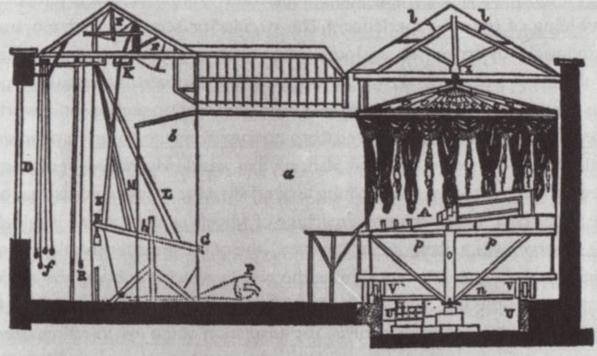
With the viewer at the centre of the view, the frame was dissolved. No longer was the experience of landscape representation mediated by the baroque perspectival constructions of traditional city views. The visitor was invited to encounter the landscape directly. Of course, this was still an image, but every effort was made to support the illusion that the visitor had been transported to the very point from which the image had been captured. Barker claimed the view was “the same as if on the spot”. Sometimes this “spot” was actually physically recreated in the panorama’s rotunda to form the viewing platform, as is the case in the 1829 Colosseum Panorama of London from St Paul’s Cathedral. The structure of the model of the cathedral tower is evident in a contemporary engraving by Rudolph Ackermann.
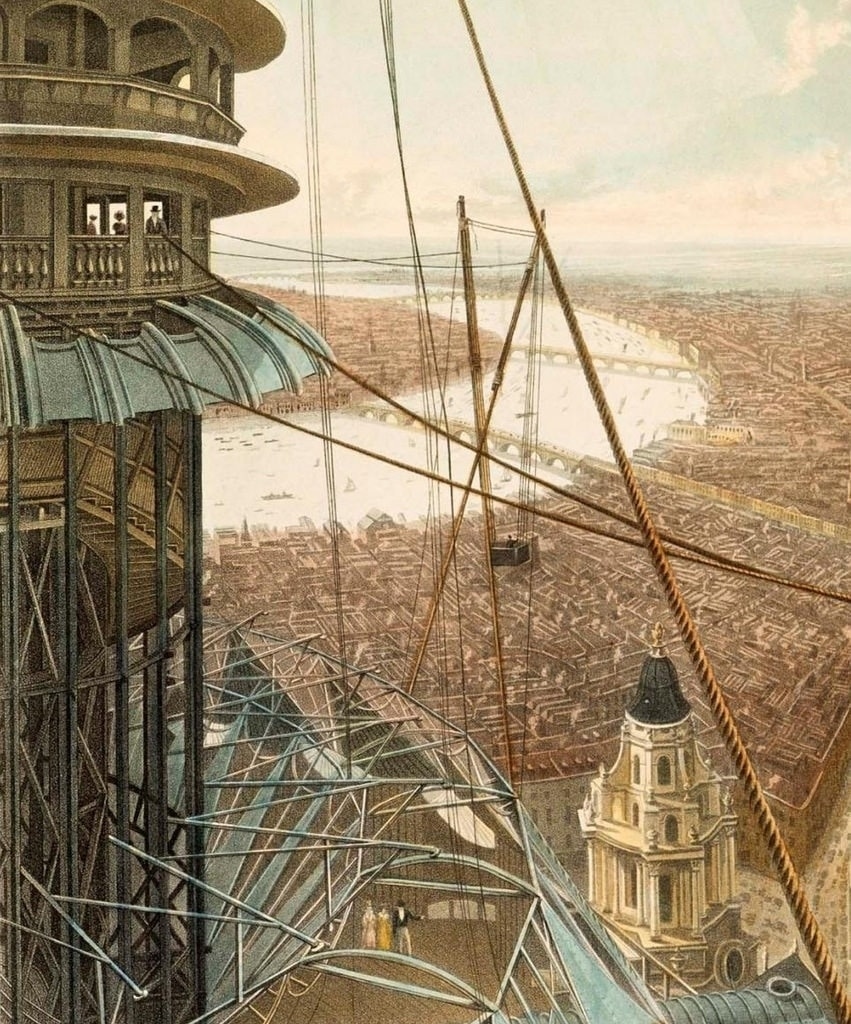
But many of those entering the rotunda to admire the view found themselves disoriented, and it was not unusual for a first-time visitor to a panorama to be sick.4 The disruption of the conventional relationship between viewer and canvas — the removal of the frame, the legends, the hierarchy that reminded the viewer where they stood — could induce a powerful sense of dizziness and nausea. Visitors encountered the limits of their own bodies by being immersed and yet unable to see everything at once.5
The use of a conventional linear perspective both projected and demanded an observer situated at an exterior, elevated point; it was a way of making sense of the large space and depth of a city view. The viewer of the picture needed to occupy this ideal viewpoint and imagine themselves into the landscape while they read the image. From the late eighteenth century, the panorama modulated this scopic regime by immersing the viewer within the image while maintaining a certain separation and elevation of viewpoint. The impossibility of seeing the whole canvas at once, and the emphasis on verisimilitude in what was evidently an illusion, generated a new awareness of the limits of vision. The panorama inaugurated a mode of vision that was more subjective and self-reflexive, in which the beholder described not so much what there was in the image, but what they saw there and what it looked like to them. It was a peculiarly appropriate mindset with which to experience the newly elevated view enabled by the hot air balloon, which made its first manned ascent in France in 1783.
The fact that the balloon and the panorama were invented within five years of one another, and the similarity of the 360-degree views they offered, is remarkable. In his The Panorama: History of a Mass Medium, Stephan Oettermann argued that the new visual experience gained in the balloon led to the development of a format for recreating the immersive view.6 He qualifies this claim with the suggestion that the panorama responded indirectly to more sophisticated demands on vision and representation, by no means all to do with the balloon.7 It is not, I think, a simple case of cause and effect, with the balloon coming first, nor did both devices emerge from the same set of circumstances; for example, the balloon’s uptake depended on the availability of hydrogen that had only just been successfully combined.8 But the panorama undoubtedly schooled its visitors in a mode of viewing that was compatible with ballooning. And though the balloon was five years older than the panorama, far fewer people directly experienced balloon travel than the tens of thousands who visited a panorama. Before 1836, a total of 313 people had ascended in a balloon in England by one contemporary compiler’s reckoning; in contrast, as an example, the Colosseum’s Panorama of London received more than that number in a single day during its 1829 season.9 In the first fifty years of these two technologies, the idea of the “panoramic” view was far more widely disseminated than the idea of the balloon view.
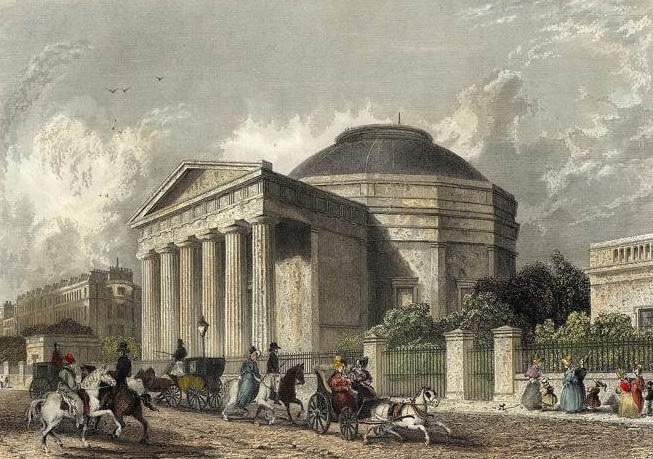
The impact of the panorama can be traced in balloonists’ accounts. Those trying to describe their airborne experiences found the panorama and its related devices to be a useful point of comparison. Before its appearance in 1792, authors of balloon accounts struggled for analogies to describe their experience. “I can find no simile to convey an idea of it”, wrote Vincent Lunardi of his elevated view of London.10 Thomas Baldwin was never lost for words, but flitted through analogies — fairyland, Lilliput, a table-top model of Paris, an “elegant Turkey-Carpet” — the only one bearing repetition being that of a “coloured Map”.11 Another 1780s balloon narrator also referred to “a coloured map or carpet” — the apparent flatness of the landscape was a new and unimagined feature of the aerial view.12 Both Lunardi and Baldwin related their views at one point to bird’s-eye views, mentioning “oblique” and “common” prospects or perspectives.13 But they insisted on the newness and difference of the view, and, in deference to Edmund Burke’s Philosophical Enquiry into the Origin of our Ideas of the Sublime and the Beautiful (1756), professed a sublime-inflected inarticulacy at the vastness and beauty of the vista.
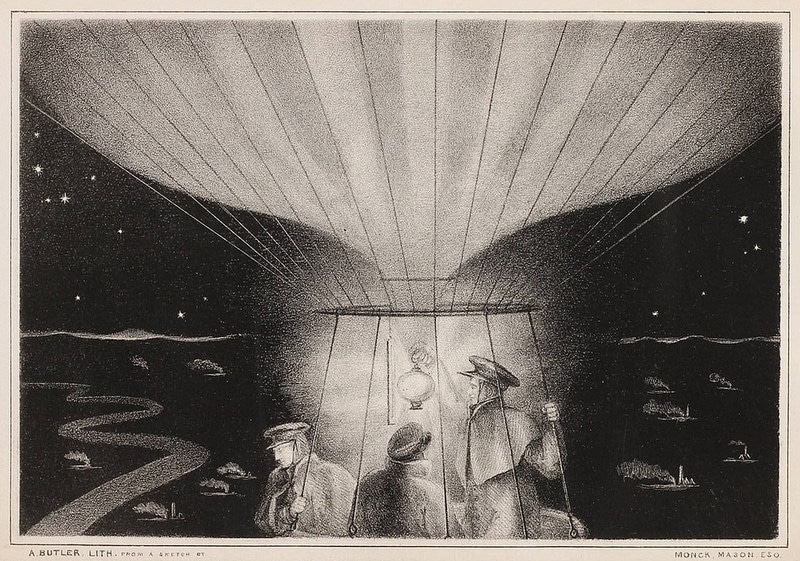
By contrast, in the first half of the nineteenth century, the heyday of the panorama, balloonists did not need to look far for an appropriate analogy. “We found ourselves… the motionless spectators of a vast panorama” wrote Dr. Forster of his first ascent.14 Henry Mayhew, the journalist and social reformer who wrote about his first balloon experience for the Illustrated London News in 1852, drew heavily on this new vocabulary:
And here began that peculiar panoramic effect which is the distinguishing feature of a view from a balloon, and which arises from the utter absence of all sense of motion in the machine itself. The earth appeared literally to consist of a long series of scenes, which were being continually drawn along under you, as if it were a diorama beheld flat upon the ground, and gave one almost the notion that the world was an endless landscape stretched on rollers, which some invisible sprites were revolving for your especial enjoyment.15
The first sentence suggests that by the middle of the century balloon views were often described as “panoramic”. His references to a diorama and a moving panorama show these contemporary entertainment technologies providing a shorthand for the expansive scope and numerous points of interest available in a balloon view. They also presage the comparison between the aeroplane view and the cinema in the twentieth century. Both the balloon and the panorama educated observers in techniques of engaging with the image that anticipated cinematographic techniques such as tracking, where the camera moves through space, and panning, where the camera swivels on a stationary point.16
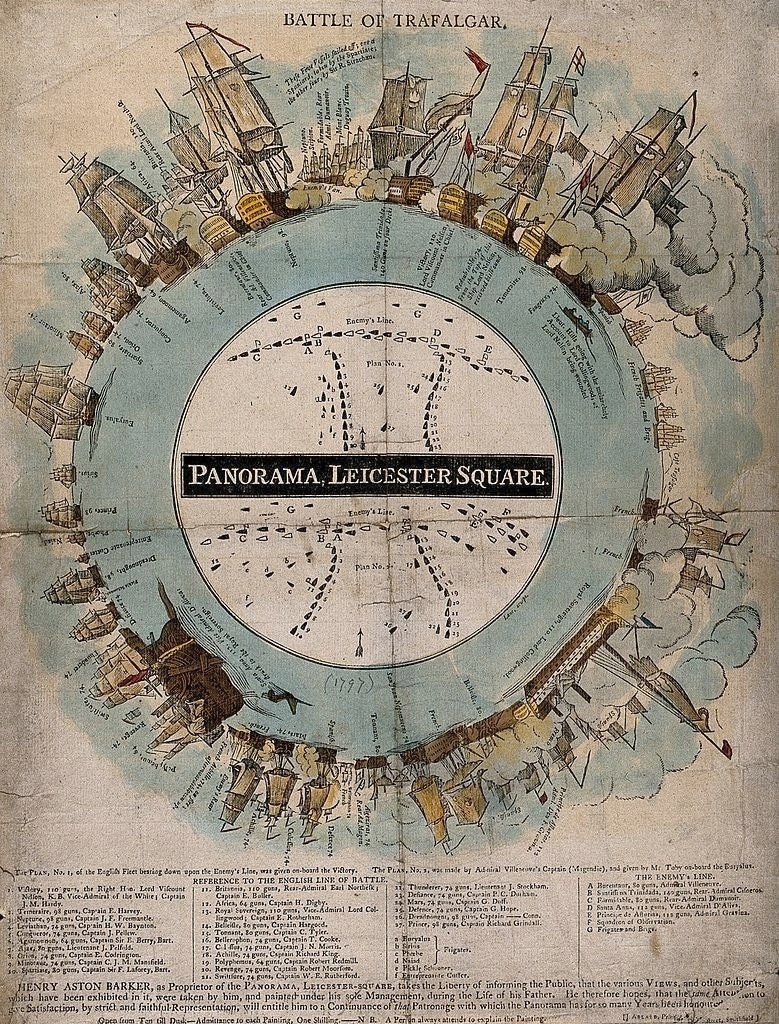
Mayhew flew in Henry Green’s balloon, the Royal Nassau, on its five hundredth ascent.17 A professional balloonist with a mind for business, Green had constructed a giant balloon which could be inflated with coal gas (much cheaper than hydrogen) and begun a residency at Vauxhall Pleasure Gardens in 1836. His long-distance balloon journey in the same year, an unprecedented eighteen-hour drift across Europe with two passengers (one of whom, Thomas Monck Mason, wrote a lengthy and fascinating account of the trip), brought welcome attention to the venture.
The ascents constituted a spectacle in themselves, drawing the attention of passers-by within the Gardens as well as providing the passengers with an exciting new experience — Mayhew noted “a multitude of upturned faces” as he ascended.18 As Richard Holmes notes, the cultural associations of the balloon changed in the 1830s, from the pioneering and dangerous image of its first fifty years to a more accessible “recreational” object.19 With a “passenger” balloon regularly ascending at Vauxhall, it became easier for the general public to experience flight. For a moderate fee, anybody could go up in the Royal Nassau and see the capital city from the air. Balloons joined panoramas on the London entertainment circuit; both types of view offered up the metropolis — the whole at once — to the gaze of the casual spectator. In 1839, it was even possible to go to Vauxhall Pleasure Gardens to experience, in a moving panorama, a simulacrum of the very balloon ascent made from the same site.20
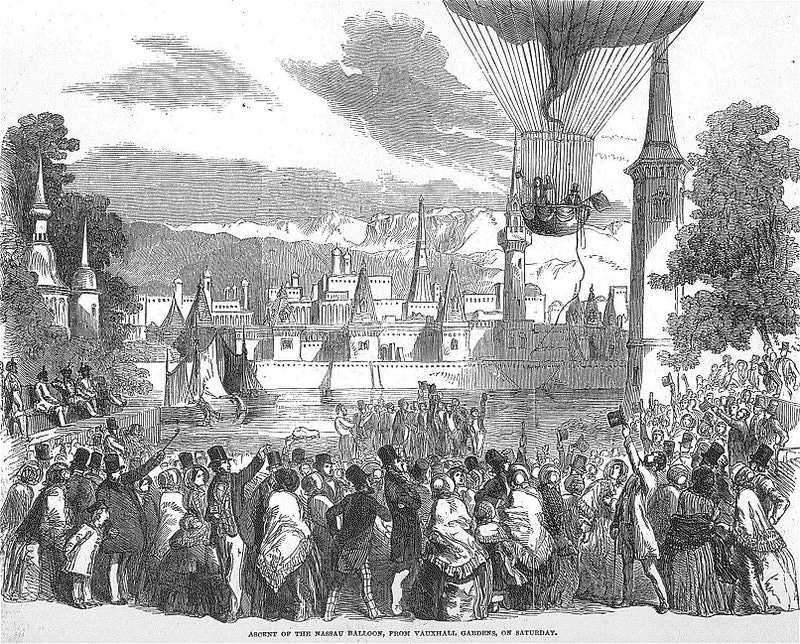
By the middle of the nineteenth century, the balloon experience had been well and truly disseminated. A map of London produced for visitors to the Great Exhibition was (inaccurately) named a “balloon view” to give it more appeal. The professional balloonist Henry Coxwell recalled that he was able to prepare for his first ascent, in 1844, simply by reading widely.
This, then, was my first real ascent; but such was the amount of thought I had bestowed on the subject in previous imaginary flights, built upon the descriptive accounts of others, that I seemed to be travelling an element which I had already explored, […]. In most respects I found the country beneath, including the busy humming metropolis, the River Thames, shipping, and distant landscape, pretty much as I expected, and had been tutored to see in the mind’s eye.21
An important shift had occurred in the experience of landscape. The panorama and the balloon disrupted the previously rigid interface between spectators and their surroundings by dissolving the frame of representations and bringing possibilities of height and movement to the viewing subject. Thomas Baldwin’s ballooning pictures were a rare attempt to reflect these possibilities, but were too strange and too new to make much impact. Some fifty years on from Baldwin’s pioneering ascent in 1785, many more people had experienced being at the centre of the view, in a static panorama, and a great deal more had been written to convey the visual rewards of aerial mobility. “[T]he aeronaut quits the earth to assume a station in the zenith of his own horizon”, wrote Thomas Monck Mason after the Nassau flight, where “all the most striking productions of art, the most interesting varieties of nature, town and country, sea and land, mountains and plains, mixed up together in the one scene, appear before him as if suddenly called into existence by the magic virtues of some great enchanter’s wand.”22 He brings to mind both a panorama and a diorama in his invocation of artifice. The new bounds of reality, visible from this suspended vantage point, were best articulated using the vocabulary of virtual reality.
[This is the second essay in a two part series. Read the first essay here]
Lily Ford works on the cultural history of flight, and finished her thesis on “airmindedness” in 1920s Britain last year at Birkbeck, University of London. She also produces essay films at the Derek Jarman Lab, including this year’s The Seasons in Quincy: Four Portraits of John Berger.
Public Domain Works
Further Reading
The Panorama: History of a Mass Medium (Zone Books, 1997) by Stephan Oettermann
The first major historical study to appear in English of the rich phenomenon of the panorama, one of the most influential forms of visual entertainment in the nineteenth century. Richly illustrated.
Illusions in Motion: Media Archaeology of the Moving Panorama and Related Spectacles (The MIT Press, 2013) by Erkki Huhtamo
An analysis of the moving panorama in all its complexity, looking at its relationship to other media and its role in the culture of its time. In Huhtamo’s telling, the panorama becomes a window for observing media in operation.
Panoramas, 1787-1900 Vol 1-5: Texts and Contexts (Routledge, 2012) by Laurie Garrison and others eds
Collection of short accounts, programs, reviews, articles and lectures concerning the history of the panorama, accompanied by an annotated key.
Falling Upwards: How We Took to the Air (Vintage, 2014) by Richard Holmes
Dazzling fusion of history, art, science, and biography, resurrecting the daring men and women who first risked their lives to take to the air in balloons.
Robert Harbison Reflections on Baroque. London: Reaktion Books, 2000, p. 115.↩
Richard D. Altick The Shows of London. Cambridge, MA and London: The Belknap Press of Harvard University Press, 1978, pp. 120-121.↩
Quoted in Scott B. Wilcox ‘Unlimiting the Bounds of Painting’ in Panoramania! The Art and Entertainment of the ‘All-Embracing’ View by Ralph Hyde. Exhibition catalogue. London: Trefoil Publications and Barbican Art Gallery, 1988, pp. 13-44, pp. 21-4.↩
Denise Blake Oleksijczuk T_he First Panoramas: Visions of British Imperialism._ Minneapolis: University of Minnesota Press, 2011, p. 12.↩
Op. cit. p. 13.↩
Stephan Oettermann The Panorama: History of a Mass Medium. Tr. Deborah Lucas Schneider. First published in German 1980. New York: Zone Books, 1997, p. 20.↩
Op. cit. pp. 8-12.↩
Richard Holmes The Age of Wonder. London: Harper Press, 2008, p. 127, p. 133.↩
Thomas Monck Mason Aeronautica; or, Sketches Illustrative of the Theory and Practice of Aerostation. London: F.C. Westley. Repr. 1972. Richmond, Surrey: The Richmond Publishing Co, 1838, p. 245. Altick op. cit. p. 147↩
Reproduced in Thomas Forster Annals of some Remarkable Aerial and Alpine Voyages. London: Keating and Brown, 1832, p. 17.↩
Thomas Baldwin Airopaidia or Aerial Recreation. Chester: J. Fletcher, 1786, pp. 38, 135, 18, 38, 65-6, 117, 42, 107.↩
John Jeffries A Narrative of the Two Aerial Voyages of Doctor Jeffries with Mons. Blanchard; with Meteorological Observations and Remarks. London: the author, 1786, p. 21.↩
Lunardi in Forster op. cit. p. 17. Baldwin op. cit. pp. 65-6.↩
Forster op. cit. p. 78.↩
Quoted in L.T.C. Rolt The Aeronauts: A History of Ballooning 1783-1903. London: Longmans, 1966, p. 134↩
See Teresa Castro ‘Aerial Views and Cinematism, 1898-1939’ in Mark Dorrian and Frédéric Pousin (eds.) S_eeing from Above: The Aerial View in Visual Culture_. Tr. Jane Yeoman. London: IB Tauris, 2013, pp. 118-133, and Helen Wickstead and Martyn Barber ‘A spectacular history of survey by flying machine’. Cambridge Archaeological Journal 22:1 (2010), pp.. 71-88, p. 77.↩
Henry Mayhew, with John Binny The Criminal Prisons of London and Scenes of Prison Life. (1863) London: Frank Cass & Co, Repr. 1968, p.8↩
Ibid↩
Richard Holmes Falling Upwards. London: Harper Press 2013, p. 53.↩
Ana Parejo Vadillo and John Plunkett ‘The Railway Passenger; or, The Training of the Eye’ in Matthew Beaumont and Michael Freeman (eds.) The Railway and Modernity: Time, Space, and the Machine Ensemble. London: Berg, 2007, pp. 45-68, p. 54.↩
Henry Coxwell My Life and Balloon Experiences with a Supplementary Chapter on Military Ballooning. 2 vols. London: W.H. Allen, 1887, vol. 2, p. 50.↩
Monck Mason op. cit. p. 141, p. 142.↩
 “For the Sake of the Prospect”: Experiencing the World from Above in the Late 18th Century
“For the Sake of the Prospect”: Experiencing the World from Above in the Late 18th Century
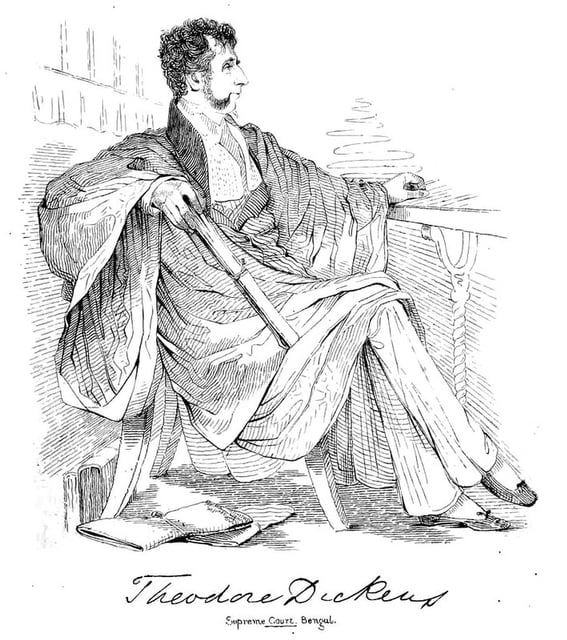 The Calcutta Pococurante Society: Public and Private in India’s Age of Reform
The Calcutta Pococurante Society: Public and Private in India’s Age of Reform